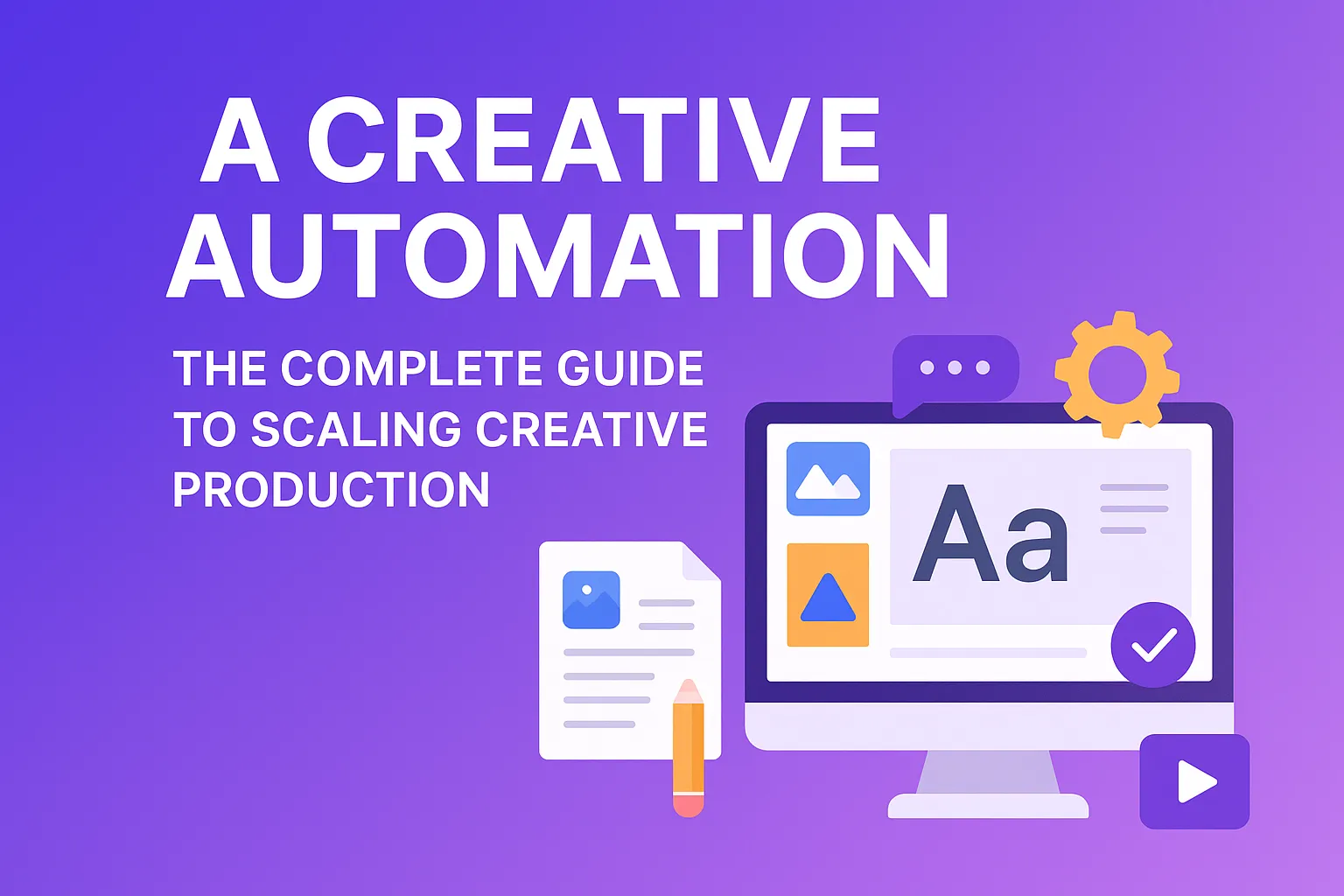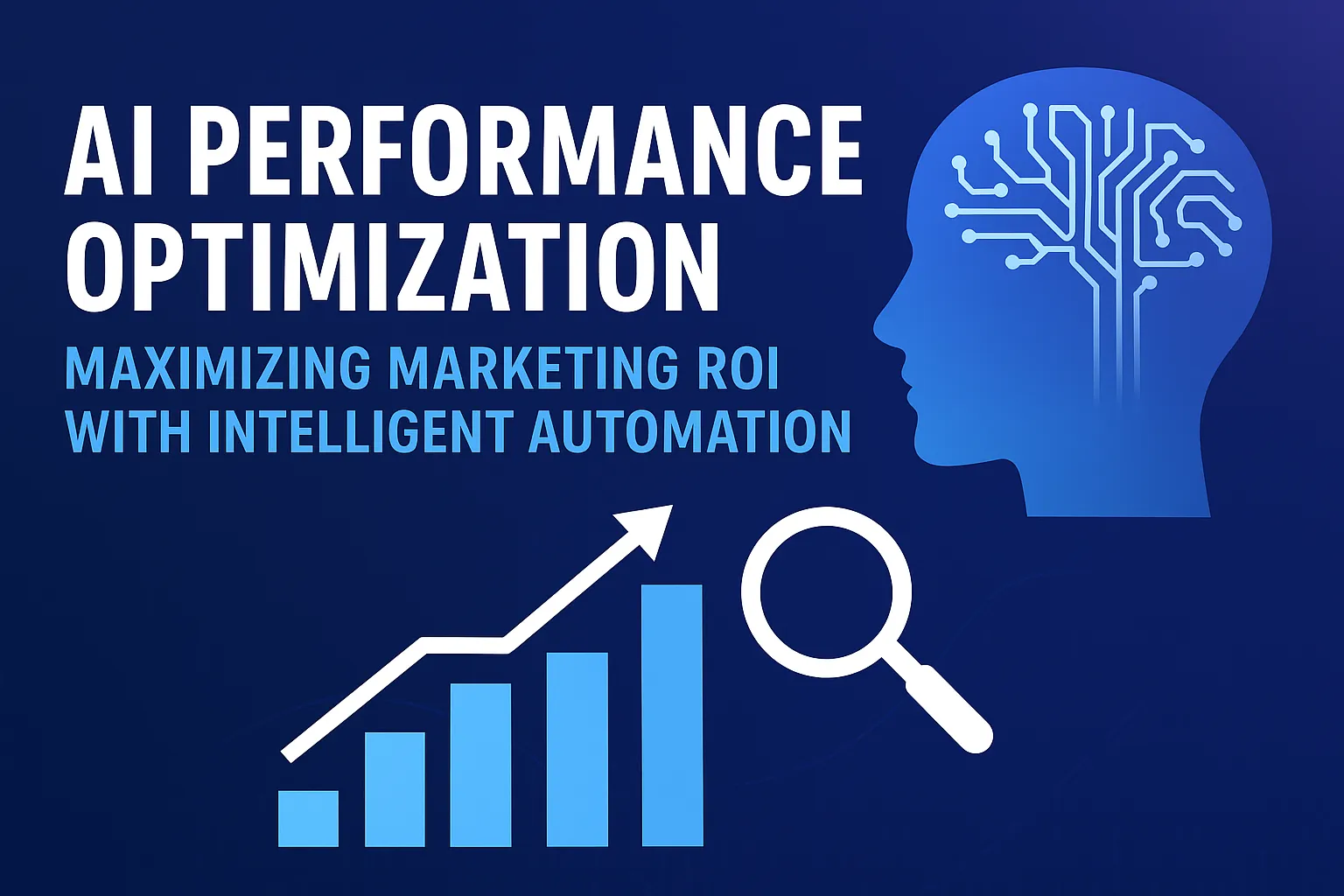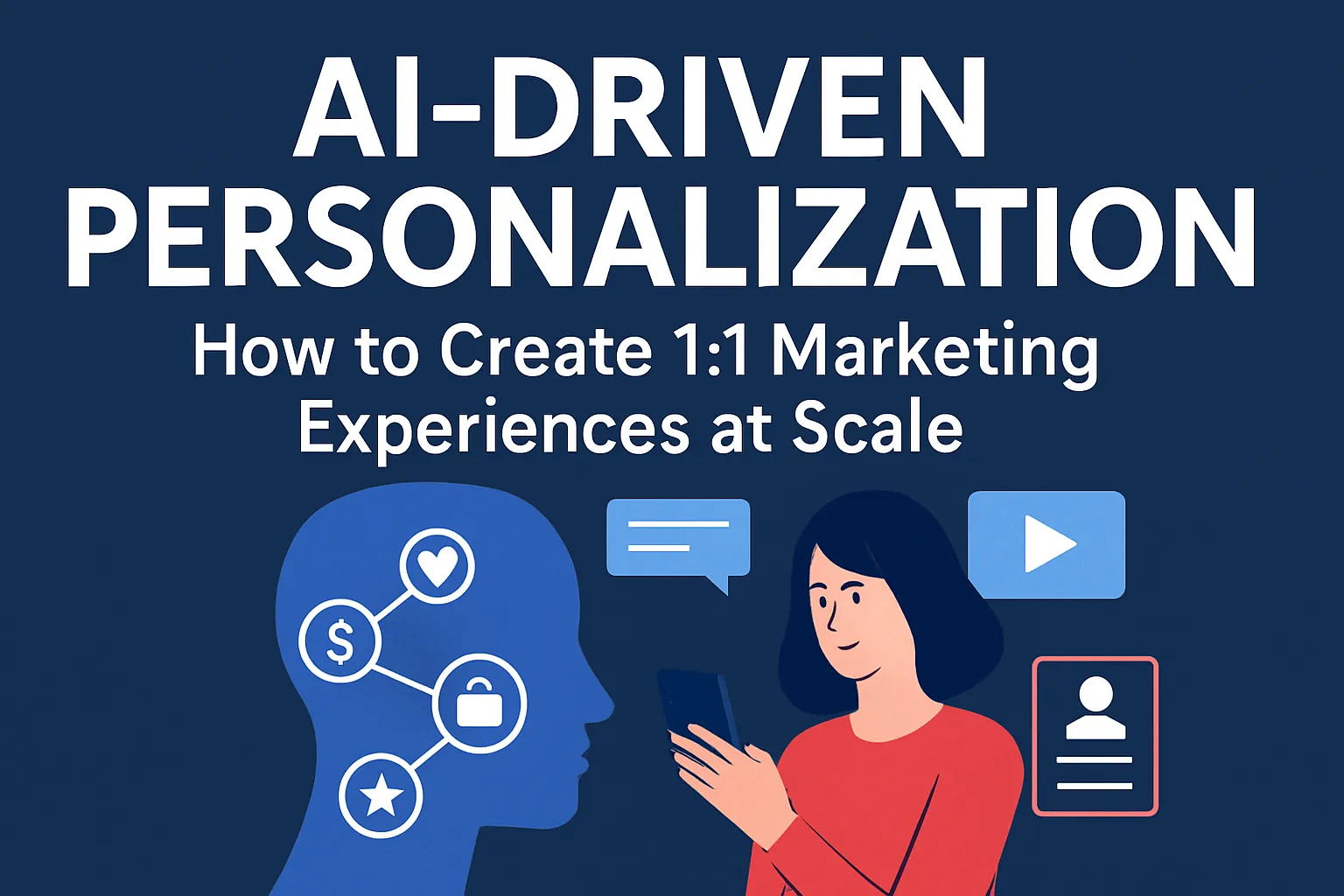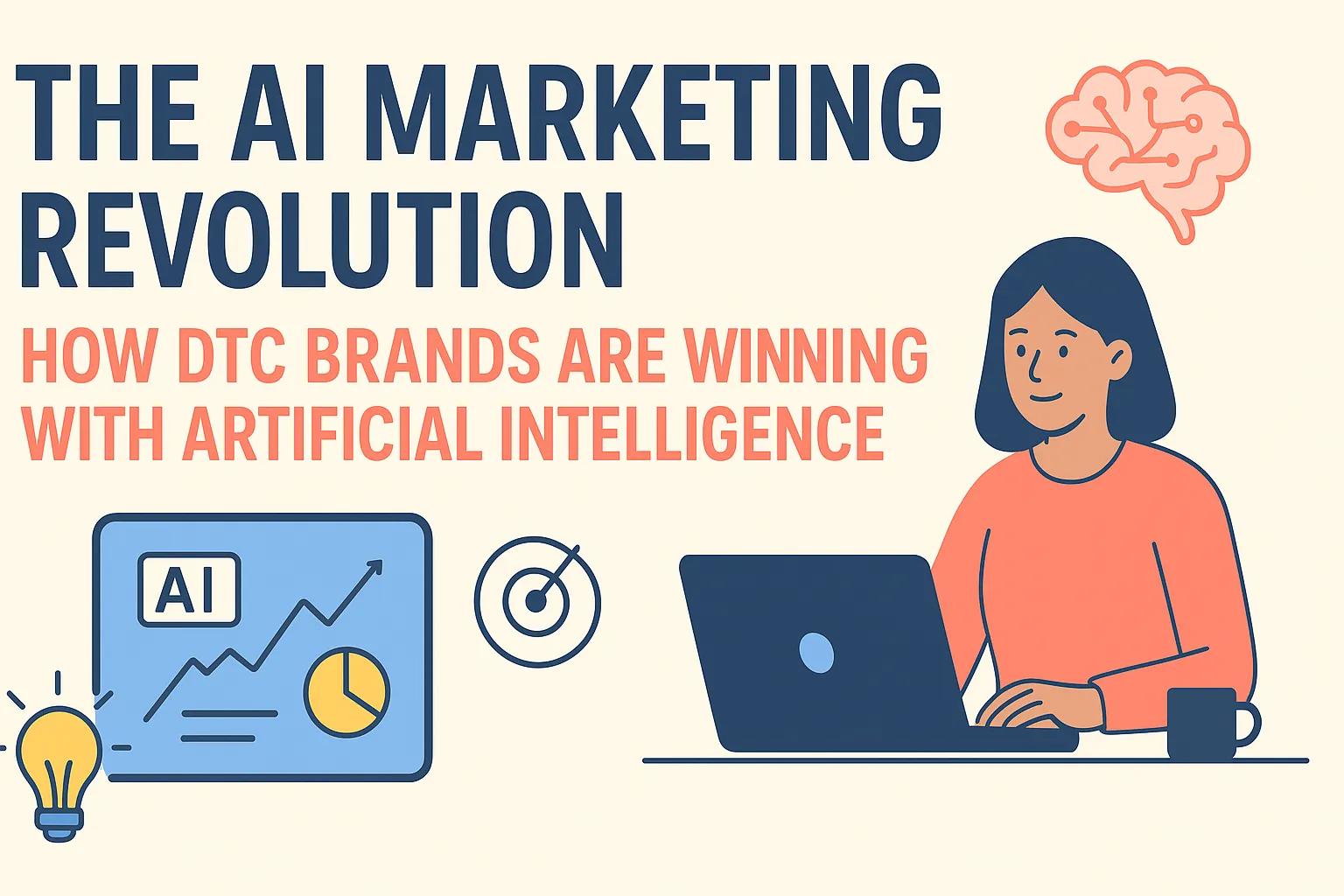AI Creative Automation: The Complete Guide to Scaling Creative Production
The creative bottleneck is real. Marketing teams spend 40% of their time on repetitive creative tasks, while the demand for fresh, engaging content continues to grow exponentially. Enter AI creative automation—the game-changing technology that’s transforming how brands produce, test, and optimize creative content at scale.
In this comprehensive guide, we’ll explore how AI creative automation is revolutionizing marketing creative production and how you can implement it to scale your creative output while maintaining quality and brand consistency.
The Creative Production Crisis
Traditional creative production is broken. Here’s the reality:
- Average time to create one ad: 2-3 weeks
- Cost per creative asset: $500-$5,000
- Creative testing capacity: 3-5 variations per campaign
- Time spent on repetitive tasks: 40% of creative team’s time
Meanwhile, consumers are exposed to 4,000-10,000 ads per day, making it increasingly difficult to capture attention and drive engagement. The solution? AI creative automation.
What is AI Creative Automation?
AI creative automation uses artificial intelligence to generate, optimize, and scale creative content automatically. It combines:
- Machine learning algorithms that understand brand guidelines and audience preferences
- Natural language processing for copy generation and optimization
- Computer vision for image and video creation and editing
- Performance data integration for continuous optimization
Key Capabilities
Content Generation:
- Ad copy that adapts to different audiences and platforms
- Image variations that maintain brand consistency
- Video content that tells compelling stories
- Social media posts optimized for each platform
Brand Consistency:
- Automatic adherence to brand guidelines
- Consistent voice and tone across all content
- Logo placement and brand color application
- Typography and design element consistency
Performance Optimization:
- Real-time creative testing and optimization
- A/B testing at scale with hundreds of variations
- Performance-based creative selection
- Continuous learning and improvement
The Business Impact of AI Creative Automation
Quantified Results
Brands using AI creative automation report:
- 85% reduction in creative production time
- 300% increase in creative testing capacity
- 45% improvement in ad performance
- 60% reduction in creative production costs
- 200% increase in creative output volume
Real-World Success Stories
E-commerce Brand Case Study: A fashion retailer used AI creative automation to generate 500+ product ad variations in one day. The result? A 340% increase in click-through rates and 67% reduction in cost per acquisition.
SaaS Company Case Study: A B2B software company automated their LinkedIn ad creative production, generating 200+ variations for different industry segments. This led to a 89% increase in qualified leads and 45% reduction in lead acquisition costs.
Core AI Creative Automation Strategies
1. Dynamic Creative Optimization (DCO)
DCO automatically generates and tests thousands of creative combinations to find the best-performing variations.
How it works:
- Define creative elements (headlines, images, CTAs, etc.)
- Set brand guidelines and constraints
- Let AI generate and test combinations
- Automatically serve the best-performing creatives
Key benefits:
- Continuous optimization without manual intervention
- Personalized creative experiences for different audiences
- Data-driven creative decisions
- Scalable testing across multiple platforms
2. Brand-Consistent Content Generation
AI can generate on-brand content that maintains consistency across all touchpoints while adapting to different contexts and audiences.
Content types:
- Ad copy that matches brand voice and tone
- Product descriptions that highlight key benefits
- Social media posts optimized for each platform
- Email content that personalizes to individual preferences
Brand consistency features:
- Automatic logo placement and sizing
- Brand color palette application
- Typography and font consistency
- Voice and tone matching
3. Multi-Platform Creative Adaptation
The same core creative concept can be automatically adapted for different platforms, audiences, and formats.
Platform adaptations:
- Facebook/Instagram: Square and vertical formats with platform-specific CTAs
- LinkedIn: Professional tone and B2B-focused messaging
- TikTok: Vertical video format with trending audio and effects
- Google Ads: Text-focused with clear value propositions
4. Performance-Driven Creative Evolution
AI continuously learns from performance data to improve creative quality over time.
Learning mechanisms:
- Performance analysis: Understanding which creative elements drive results
- Audience insights: Learning what resonates with different segments
- Platform optimization: Adapting to platform-specific best practices
- Trend integration: Incorporating current trends and cultural moments
Advanced AI Creative Automation Techniques
1. Generative AI for Creative Concepts
Advanced AI can generate entirely new creative concepts based on brand guidelines and performance data.
Capabilities:
- Concept generation: Creating new campaign ideas and themes
- Visual storytelling: Developing compelling narrative structures
- Emotional targeting: Crafting content that resonates with specific emotions
- Cultural adaptation: Adapting content for different markets and cultures
2. Real-Time Creative Personalization
AI can personalize creative content in real-time based on user behavior and context.
Personalization factors:
- Demographic data: Age, gender, location, income
- Behavioral data: Browsing history, purchase patterns, engagement
- Contextual data: Time of day, device type, current events
- Psychographic data: Interests, values, lifestyle preferences
3. Cross-Channel Creative Orchestration
AI ensures consistent creative experiences across all marketing channels while optimizing for each platform’s unique characteristics.
Orchestration features:
- Unified creative themes across all channels
- Platform-specific optimizations for each touchpoint
- Sequential storytelling that guides users through the funnel
- Consistent brand experience regardless of where users encounter your brand
Implementing AI Creative Automation
Phase 1: Foundation Setup (Weeks 1-2)
-
Audit your current creative process
- Map your creative workflow
- Identify bottlenecks and inefficiencies
- Document brand guidelines and requirements
-
Choose your AI creative platform
- Evaluate platforms based on your needs
- Ensure integration with your existing tools
- Test with a small pilot program
Phase 2: Brand Integration (Weeks 3-4)
-
Upload brand assets and guidelines
- Logo files and usage guidelines
- Color palettes and typography
- Voice and tone documentation
- Visual style guides
-
Train AI on your brand
- Feed AI examples of your best-performing creatives
- Set up brand consistency rules
- Test generated content for brand alignment
Phase 3: Campaign Implementation (Weeks 5-6)
-
Start with high-impact campaigns
- Choose campaigns with clear performance metrics
- Begin with simple creative variations
- Monitor performance closely
-
Scale successful strategies
- Expand to additional campaigns
- Increase creative variation complexity
- Add new platforms and channels
Phase 4: Advanced Optimization (Ongoing)
-
Implement advanced features
- Real-time personalization
- Cross-channel orchestration
- Predictive creative optimization
-
Continuous improvement
- Regular performance analysis
- Creative strategy refinement
- Platform and audience expansion
Best Practices for AI Creative Automation
1. Maintain Human Oversight
While AI can generate content automatically, human oversight ensures quality and brand alignment.
Human involvement:
- Regular review of generated content
- Brand guideline updates and refinements
- Creative strategy direction and adjustments
- Quality control and approval processes
2. Start Simple, Scale Gradually
Begin with basic creative automation and gradually increase complexity as you gain experience.
Progressive approach:
- Start with text variations and simple image swaps
- Add more complex visual elements over time
- Introduce video and interactive content
- Implement advanced personalization features
3. Focus on Performance Data
Use performance data to guide AI training and optimization.
Data-driven approach:
- Track performance metrics for all generated content
- Identify patterns in high-performing creatives
- Feed successful examples back into AI training
- Continuously refine creative strategies
4. Maintain Brand Consistency
Ensure all AI-generated content maintains your brand identity and values.
Consistency measures:
- Regular brand guideline updates
- Automated brand compliance checking
- Human review of brand-critical content
- Feedback loops for brand alignment
Measuring AI Creative Automation Success
Key Performance Indicators
Efficiency metrics:
- Time saved in creative production
- Number of creatives generated per day
- Cost per creative asset
- Creative team productivity improvements
Quality metrics:
- Brand consistency scores
- Creative approval rates
- Performance vs. manually created content
- Audience engagement levels
Business impact:
- Campaign performance improvements
- Cost per acquisition reductions
- Revenue per creative asset
- Overall marketing ROI improvements
Advanced Analytics
Creative performance analysis:
- Which creative elements drive the best results
- Audience preferences by segment
- Platform-specific optimization opportunities
- Seasonal and trend-based performance patterns
ROI measurement:
- Creative production cost savings
- Performance improvement value
- Time-to-market acceleration benefits
- Competitive advantage quantification
Common Pitfalls and How to Avoid Them
1. Over-Automation
Too much automation can lead to generic, uninspiring content.
Prevention:
- Maintain human creative input
- Regularly review and refine AI outputs
- Balance automation with creative innovation
- Keep brand personality and uniqueness
2. Poor Brand Integration
AI-generated content that doesn’t align with brand guidelines can damage brand perception.
Best practices:
- Invest time in proper brand training
- Set up automated brand compliance checks
- Regular human review of brand-critical content
- Continuous brand guideline updates
3. Ignoring Performance Data
Not using performance data to improve AI training leads to stagnant creative quality.
Solution:
- Implement robust performance tracking
- Regular analysis of creative performance
- Feedback loops for AI improvement
- Data-driven creative strategy refinement
The Future of AI Creative Automation
Emerging Technologies
Advanced generative AI:
- Text-to-video generation
- 3D content creation
- Interactive and immersive experiences
- Real-time creative collaboration
Enhanced personalization:
- Emotion-based creative generation
- Contextual creative adaptation
- Predictive creative optimization
- Cross-device creative continuity
Preparing for the Future
- Invest in data infrastructure that can support advanced AI capabilities
- Build AI expertise within your creative team
- Stay updated on new creative AI technologies
- Experiment with new features as they become available
Getting Started with AI Creative Automation
AI creative automation isn’t just about efficiency—it’s about unlocking creative potential at scale. The brands that embrace this technology will produce more content, test more ideas, and achieve better results than ever before.
Your next steps:
- Assess your current creative production challenges
- Identify the biggest automation opportunities
- Start with a pilot program in one area
- Scale successful strategies across your entire creative operation
The future of creative production is intelligent, automated, and incredibly effective. With AI creative automation, you can turn your creative team into a content production powerhouse that never runs out of ideas.
Ready to transform your creative production with AI? Discover how Adomate’s AI creative automation platform can help you generate, test, and optimize high-performing creatives at scale.




